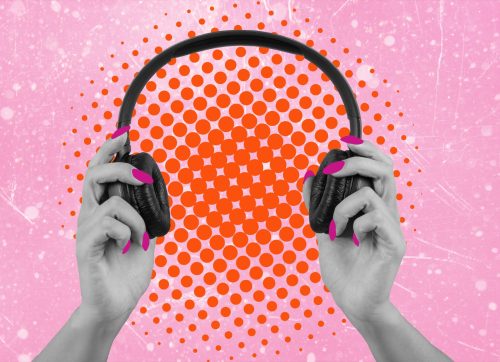
How Noise, Vibrations, and Frequency Affect Our Mind and Body (the Power of Sound)
Sound is everywhere. It’s not just something we hear—it’s something we feel deep in our bones, hearts, and minds. From the hum of a fan to the peaceful tones of a Tibetan singing bowl, sound can influence how we feel and function.
- Author:
- Christopher Truffa
- Date:
- June 6 2025
In previous articles, I’ve shared how nature sounds and visualization techniques can bring a sense of calm and balance into our daily lives. Now, I want to dive deeper into how sound affects our bodies and minds, and how you can harness its power for your well-being.
Understanding Noise Types
Not all sounds are the same. While some are background noise, others can help us focus, relax, and sleep better. Scientists have broken sounds down into categories based on their frequencies, each offering its own benefits.
White Noise: A Simple, Steady Sound for Focus and Sleep
White noise is made up of all frequencies at equal intensity, creating a constant "shh" sound, think of the hum of a fan or the static of an untuned TV. It’s the perfect tool to block distractions and even help with sleep.
How to Use It: Play white noise while working to create a calm environment or mask other sounds that might keep you awake at night.
Pink Noise: A Soothing Sound That Mirrors Nature
Pink noise is softer than white noise and has a balance of frequencies closer to the sounds we hear in nature, like rain or ocean waves. It’s known for helping us sleep deeply and relax.
How to Use It: If white noise is too harsh, try pink noise instead. A recording of rain or ocean waves is perfect for winding down before bed.
Brown Noise: Deep, Grounding Tones for Calm
Brown noise has even deeper frequencies, like the rumble of thunder or a distant waterfall. It’s beneficial for calming an overactive mind, making it an excellent choice for anxiety or meditation.
How to Use It: Use brown noise to relax before bed or to help quiet your mind during a stressful day.
Green Noise: The Natural Sounds of the Earth
Green noise is a subcategory of pink noise that focuses on frequencies found in nature—think forest streams, wind through the trees, or the ocean. It’s great for lowering stress and connecting with your body.
How to Use It: When you need a break, listen to green noise to bring a little piece of nature into your space. It’s a great way to reset and refresh during a busy day.
How Vibrations and Frequencies Affect Our Well-Being
Sound isn’t just something we hear; it can physically affect us. Our bodies vibrate at specific frequencies—our hearts, brains, and even cells all work in a rhythmic pattern. When we listen to sound frequencies that resonate with us, they can help to calm, heal, and restore balance.
Healing Frequencies to Try
528 Hz – The “Love” Frequency
This frequency is known for promoting emotional healing and DNA repair. It’s often called the "Miracle Tone" and is said to help open the heart and restore harmony.
432 Hz – The Natural Resonance of the Universe
432 Hz is thought to be in sync with nature’s natural vibrations. It’s great for reducing stress and bringing a sense of peace.
639 Hz – Connection and Relationships
This frequency enhances communication and heals emotional wounds. It's a great one to try if you’re looking to improve your relationships.
174 Hz – Deep Relaxation and Pain Relief
174 Hz helps reduce pain and tension. It’s grounding and helps create a sense of security, making it great for deep relaxation.
40 Hz – Cognitive Boosting
This frequency has been linked to improved brain function and focus. It’s used in Alzheimer’s research and can help with meditation or problem-solving.
How to Use Sound for Healing Every Day
The beauty of sound healing is that it’s accessible to anyone. You don’t need fancy equipment or a wellness retreat to experience its benefits. Here are some simple ways to integrate sound into your daily routine:
- Start Your Day with Healing Frequencies: Play 528 Hz music in the morning to set a positive tone for the day ahead.
- Use Binaural Beats for Focus: Binaural beats help synchronize your brainwaves, making it easier to concentrate and be productive.
- Try a Sound Bath: Attend a sound bath or play recorded sound bath meditations at home. Tibetan singing bowls can be especially soothing.
- Sing or Hum: Your voice is a powerful healing tool. Humming activates the vagus nerve, helping you relax and calm your nervous system.
- Combine Sound with Movement: Take a natural walk while listening to healing frequencies or green noise. The combination of movement and sound can deepen the effects.
Bringing It All Together
Sound is a powerful tool for healing, focus, and balance. Whether through nature sounds, specific noise frequencies, or healing vibrations, sound therapy offers a simple way to improve your mental, emotional, and physical health. The best part? It’s available to everyone, every day.
So, next time you need a reset or a boost, think about the sound around you. Whether you’re in a bustling city or relaxing at home, how will you use sound to heal today?
Are you ready to take the journey?
Take the journey and find your nature guide.


